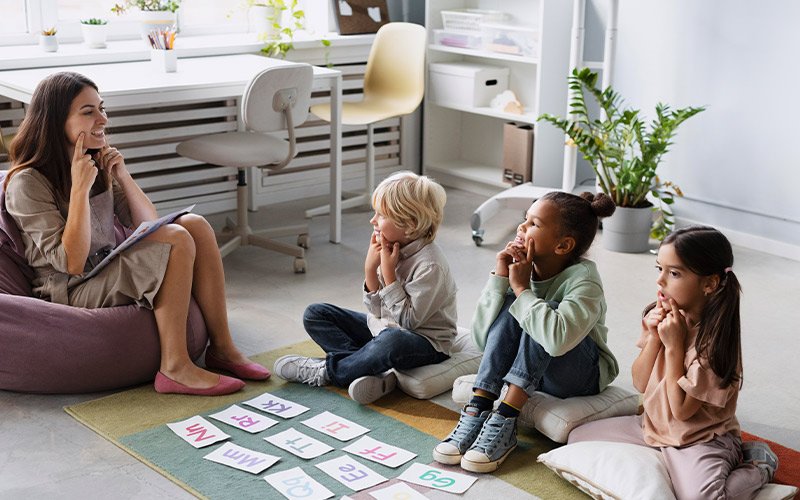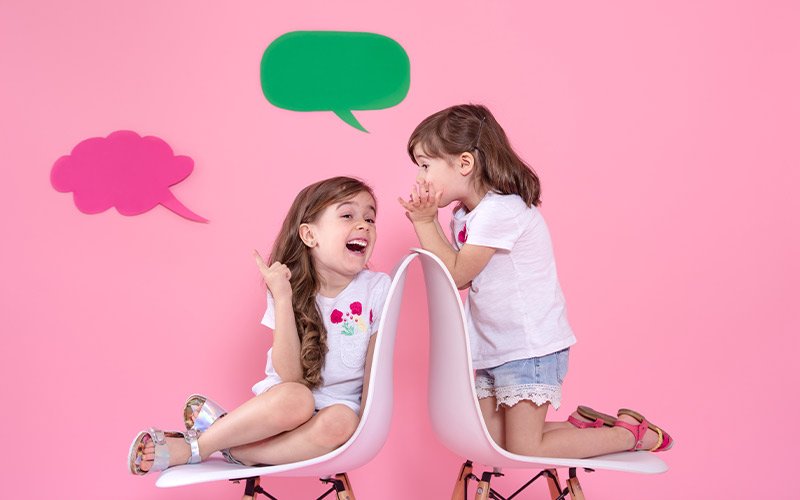Empowering Children to Connect with the World Around Them
When a child struggles to express themselves, the worry parents feel is immediate and deeply personal. Whether it’s a delay in spoken language or difficulty with social interaction, communication challenges can affect every part of daily life—from school to play to simply asking for a snack. Fortunately, ABA therapy offers an effective, research-backed approach to improving communication skills in children.
Applied Behavior Analysis (ABA) is more than just a behavioral intervention—it is a comprehensive, individualized method that nurtures communication in children with autism spectrum disorder (ASD), speech delays, and other developmental differences. By breaking down complex communication into teachable, manageable steps, ABA therapy empowers children to build confidence in expressing their needs, thoughts, and emotions. According to the National Institute of Mental Health, ABA has been shown to improve a range of skills, including language and social communication, particularly when started early and supported consistently.
The Link Between ABA Therapy and Communication Development
Communication goes far beyond words. It includes gestures, eye contact, body language, understanding cues, and social turn-taking. Children with communication challenges may experience frustration when they can’t express their needs or connect with others. This often leads to behavioral issues or withdrawal.
ABA therapy services help address this by using structured teaching methods to build communication step by step. Through consistent reinforcement, visual prompts, modeling, and repetition, therapists support children in learning how to:
- Request items or actions (known as manding)
- Label objects, people, or emotions (tacting)
- Answer questions (intraverbal skills)
- Use eye contact and gestures appropriately
These skills may be developed through verbal or non-verbal means, depending on the child’s abilities and communication goals.
How ABA Therapy Enhances Communication Skills in Children

1. Individualized Assessments and Functional Communication Training (FCT)
Every child’s communication journey is different. ABA begins with a detailed assessment to understand the child’s current abilities, triggers, preferences, and goals. Therapists may use standardized tools or conduct play-based assessments to gather this information.
Based on the assessment, one of the core strategies used is Functional Communication Training (FCT). FCT teaches children alternative, appropriate ways to communicate—especially to reduce challenging behaviors. For instance, a child who throws objects when upset may learn to request a break instead. This method reduces frustration and improves overall communication clarity.
2. Breaking Down Communication into Teachable Components
One reason applied behaviour analysis is so effective is its ability to deconstruct complex behaviors into smaller, achievable steps. For communication, this means children can start with basic requests or signs and gradually work up to sentences, conversations, and social exchanges.
For example:
- A non-verbal child might first learn to point or use a picture card
- Next, they might learn to say a single word like “juice”
- Eventually, they may form full phrases such as “I want juice, please”
This gradual, systematic approach builds confidence and reinforces success at every stage.
3. Using Motivation to Drive Learning
Communication becomes meaningful when it’s tied to a child’s real desires. ABA therapists frequently use a technique called Natural Environment Teaching (NET) to teach communication in the context of everyday routines. If a child wants a toy, snack, or attention, that moment becomes a teaching opportunity.
For instance:
- A child reaching for a cookie may be prompted to say “cookie” or hand over a picture symbol
- After responding, the child receives the item as reinforcement
This method ensures that communication is functional and directly tied to the child’s environment, increasing engagement and retention.
Supporting Communication at Home

4. Consistency Through In-Home ABA Therapy
One of the most effective ways to reinforce progress is by extending therapy into the home. In-Home ABA Therapy allows families to practice communication strategies in real-life situations—during mealtime, play, or bedtime routines.
Therapists guide parents in how to:
- Prompt communication naturally
- Reinforce attempts (even imperfect ones)
- Avoid unintentional reinforcement of challenging behaviors
- Use visual aids or communication devices effectively
The home environment becomes a consistent, supportive space where children can generalize their skills across settings.
5. Collaboration with Speech Therapy Services
While ABA focuses on behavior and learning principles, speech therapy services target the mechanics and development of speech and language. When used together, these therapies complement one another beautifully.
For example:
- A speech therapist may help a child produce the “s” sound
- The ABA therapist may reinforce using that sound during daily requests
This collaboration ensures that progress in therapy is both technically sound and behaviorally reinforced. Open communication between teams helps track improvements and adjust goals as needed.
Practical Strategies to Enhance Communication Outside of Therapy
6. Create a Language-Rich Environment
Children learn best when they are immersed in environments filled with communication opportunities. Simple adjustments can have a big impact.
Tips include:
- Narrate daily routines (“Now we’re putting on shoes!”)
- Offer choices often (“Do you want the red ball or the blue one?”)
- Read interactive books and ask questions
- Use visual schedules or picture cards to support understanding
Even short, consistent efforts each day can build vocabulary and increase confidence.
7. Practice Patience and Positive Reinforcement
Children developing communication skills often need time to respond or try multiple times. Rushing or finishing their sentences can discourage independent communication.
Instead:
- Pause and wait after asking a question
- Acknowledge attempts with praise (“Good try asking for help!”)
- Use a calm tone to model language
- Repeat back what the child said correctly, rather than correcting harshly
Reinforcing effort builds motivation and reduces pressure around speaking.
8. Model and Expand Language
When a child says a word or short phrase, caregivers can help them build on it by modeling the next level.
For example:
- Child: “Car”
- Adult: “Yes, a red car is driving fast!”
This method, often used in ABA and speech therapy, helps children naturally acquire more complex language without pressure.
Long-Term Benefits of ABA-Focused Communication Support

When communication improves, so does a child’s ability to navigate the world. Many families see progress not just in language, but also in:
- Reduced frustration and meltdowns
- Improved relationships with peers and family
- Greater independence
- Confidence in social situations
Research published in the Journal of Autism and Developmental Disorders indicates that children who receive early, intensive ABA therapy experience significant gains in both receptive and expressive language.
Moreover, when communication becomes easier, it often opens the door to progress in other areas like learning, socialization, and emotional regulation.
Final Thoughts
Communication is one of the most essential life skills. When a child faces delays or difficulties in this area, it can feel isolating—for both the child and their family. But with the support of structured, evidence-based interventions like ABA therapy services, meaningful change is possible.
ABA offers more than behavioral tools—it offers hope, empowerment, and connection. Through individualized plans, positive reinforcement, and family collaboration, children can learn to express themselves clearly and confidently.
For families navigating this journey, progress may start with a single word, sign, or gesture. But each step forward brings a child closer to being fully heard and understood—and that’s something every child deserves.
